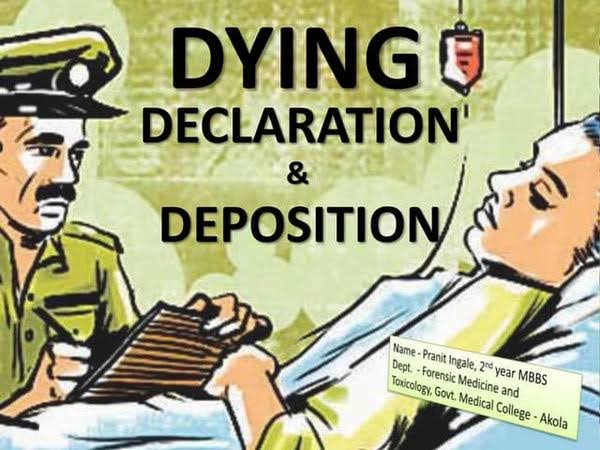Bharati Sapru, J.@mdashHeard Sri Shambhu Chopra appearing on behalf of the Department and Sri S.D. Singh appearing on behalf of assessee.
2. The present wealth-tax appeal has been filed u/s 27A of the WT Act, 1957 against the order dt. 28th May, 1999, passed by Tribunal, Allahabad Bench, Allahabad in WTA No. 110/All/1996 for the asst. yr. 1989-90.
3. The relief sought in the present appeal is that the order dt. 28th May, 1999, passed by the Tribunal Allahabad in the WTA No. 110 of 1996 for the asst. yr. 1989-90 in the case of WTO v. Smt. Shakuntala Devi Dalmia, Kanpur, be set aside and the impugned order of penalty made against the assessee u/s 18(l)(c) imposed by the WTO''s order dt. 23rd March, 1993 be restored.
4. The following two substantial questions of law have been called for in the present case:
1. Whether on the facts and in the circumstances of the case, the Tribunal was correct in law in holding that neither Expln. 2 nor Expln. 4 to Section 18(l)(c) of the WT Act, 1957 was applicable to this case ?
2. Whether on the facts and in the circumstances of the case, the Tribunal was correct in law in holding that the explanation offered by the assessee was sufficient to rebut the presumption for concealing the particulars in relation to the value of the immovable property bearing No. 87/110(3), Kalpi Road, Kanpur, or for furnishing inaccurate particulars of the asset ?
5. The facts of the case are that the assessee filed a return of wealth for the asst. yr. 1989-90 on 23rd Aug., 1989 showing a net wealth of Rs. 5,17,400. The assets disclosed in the return of wealth included immovable property bearing No. 87/110(3), Kalpi Road, Kanpur. The assessee showed the value of this property at Rs. 82,500.
While determining the assessment, the AO found that the assessee had applied for a clearance certificate u/s 230A of the IT Act, 1961, wherein the apparent consideration for the sale of the aforesaid immovable property was shown at Rs. 26,34,650. The sale took place in the year subsequent to the previous year relevant to the asst. yr. 1989-90.
The AO also found that Sch. III of the WT Act, 1957 was not applicable for valuing the property in question as the difference between unbuilt area and the specified area exceeded 20 per cent of the aggregate area. The AO made a reference to the Valuation Officer u/s 16A of the Act for determining the value of this property. The Valuation Officer of the IT Department determined the fair market value of the property at Rs. 37,14,000. The AO adopted the value of this property at Rs. 37,14,000, on the basis of the report of the Valuation Officer, as against the value of Rs. 82,500 declared by the assessee. The AO also initiated penalty proceedings u/s 18(l)(c) of the Act.
After allowing the assessee an opportunity of being heard, the AO passed order dt. 28th Feb., 1995, u/s 18(l)(c) of the Act. For the reasons given in the said order, the AO held that Expln. 4 below Section 18(l)(c) of the Act was applicable to this case inasmuch as the value of the immovable property No. 87/110(3), Kalpi Road, Kanpur, as shown by the assessee in her return of wealth was less than 70 per cent of the value of the asset as determined. The AO also held that the assessee had failed to prove that the failure to return the correct wealth did not arise from any fraud or any gross or wilful neglect on her part. For the reasons given in the penalty order dt. 28th Feb., 1995, the AO imposed upon the assessee a penalty of Rs. 26,180 u/s 18(l)(c) of the Act.
6. The assessee filed an appeal to the CIT(A) challenging imposition of the penalty u/s 18(l)(c) of the Act. The CIT(A) found that the value declared by the assessee was not correct. The CIT(A) was, however, of the view that there were certain factors in favour of the assessee. He observed that the value had been accepted by the Department for so many years and that there was nothing to show that the facts were not properly declared regarding the position of the property. He also observed that the assessee had declared the value of the property on the basis of the report of an approved valuer and took the view that the assessee had disclosed all the facts and material in respect of the property, cancelled the penalty imposed u/s 18(l)(c) of the Act.
7. The Department filed a second appeal to the Tribunal against the order of the CIT(A). The Tribunal held that in this case neither Expln. 2 nor Expln. 4 to Section 18(1)(c) of the Act could be applied because the explanation offered by the assessee was sufficient to rebut the presumption of concealing the particulars in relation to the value of the property in question or for furnishing inaccurate particulars of the asset. The Tribunal confirmed the order of the CIT(A), cancelling the penalty u/s 18(l)(c) of the Act, imposed by the AO. As stated earlier, it is this order dt. 28th May, 1999, passed by the Tribunal which is appealed against by the Department.
8. Learned Counsel for the Department Sri Chopra has argued that the Tribunal erred in law and on the facts of the case in holding that neither Expln. 2 nor Expln. 4 below Section 18(l)(c) of the WT Act, 1957 could be applied to this case.
9. The second limb of the argument of the learned Counsel for the Department is that the Tribunal erred in law and on the facts of the case in holding that the explanation offered by the assessee was sufficient to rebut the presumption of concealing the particulars in relation to the value of the property bearing No. 87/110(3), Kalpi Road, Kanpur, or for furnishing inaccurate particulars of the assets.
10. Thirdly, the learned Counsel for the Department has argued that the Tribunal erred in law and on the facts of the case in cancelling the penalty of Rs. 26,180 imposed u/s 18(1)(c) of the WT Act, 1957 by AO, without appreciating the fact that the case clearly fell under Expln. 4 to Section 18(l)(c) of the WT Act, 1957.
11. In support of his argument, Sri Shambhu Chopra has placed reliance on two decisions namely -
1.
2.
Sri Shambhu Chopra in short has argued that instant case is squarely covered under Expln. 4 of Section 18(1)(c) of the WT Act, which reads as under:
Explanation 4.-Where the value of any asset returned by any person is less than seventy per cent of the value of such asset as determined in an assessment u/s 16 or Section 17, such person shall be deemed to have furnished inaccurate particulars of such asset within the meaning of cl. (c) of this subsection, unless he proves that the value of the asset as returned by him is the correct value.
12. In reply, the learned Counsel for the assessee Sri S.D. Singh has argued that in the facts of the present case, the requirement of Expln. 4 to Section 18(l)(c) was fully satisfied by the assessee for the reasons that the assessee had got her property assessed by an approved valuer and the value of the property which had been shown by the assessee was on the basis of the said report.
13. Sri Singh has further argued that the property which had been assessed to be of a value of Rs. 82,500 was accepted by the Department year after year. He further argued that there was nothing on record of the case to show that the facts were not properly disclosed by the assessee regarding assessment of the value of property. In fact, he argued that all relevant facts and materials in respect of the value of property had been properly disclosed to the Department and because the event of sale took place later on, it could not be said that the assessee had concealed the particulars of property or that he had furnished any inaccurate particulars.
14. Learned Counsel for the assessee has relied on a decision of the Hon''ble Supreme Court rendered in the case of
....The Explanation, thus, shifts the burden of proof to the assessee in the situation covered by it. Once the returned income is shown to be less than 80 per cent of the total income assessed, the presumption comes into play and then the burden shifts to the assessee to establish that his failure to return the correct income was not on account of any fraud or gross or wilful neglect on his part. If he fails to establish the same, the presumption will become a finding and it would be open to the authority to levy the penalty. But if the assessee establishes that his failure to return the correct income was not on account of any fraud or any gross or wilful neglect on his part, it is evident, no penalty can be levied.
15. Learned Counsel for the assessee also relied on a decision of the Allahabad High Court rendered in the case of
"Moreover, the valuation of the property in question as disclosed by the applicant was based on the report of the approved valuer duly approved by the Department. There is bound to be a difference in the valuation report given by different Valuation Officers whether they are approved valuers or Departmental Valuers. Moreover, the value can differ on account of the different methods of valuation being adopted. In the present case, the difference arose because of different methods of valuation adopted by the approved valuer and by the Department Valuer. Thus, no case of concealment even otherwise is established."
16. In a recent decision in the case of
17. Having heard learned Counsel for the Department as well as the assessee and having examined the entiere material on record, we are of the opinion that the learned Tribunal has committed no error in coming to the conclusion that in this particular case, the assessee had successfully discharged the burden of proof imposed on him under Expln. 4 to Section 18(1)(c) and therefore it could not be said that the assessee was guilty of concealign any particular in relation to the value of the property or had furnished any inaccurate particulars of the asset. The Tribunal has clearly recorded finding of the fact, which is quoted hereinbelow:
4. ...The presumptions available under the Explanation are, however, rebutable in nature. Looking to the facts and circumstances of the case inits entirety, we are of the considered opinion that in assessee''s case neither Expln. 2 nor Expln. 4 could be applied because the explanation offered by him is sufficient to rebut the presumption of concealing th eparticulars in relation to the value of the property or for funishing inaccurate particulars of the asset. Agreeing eith the reasoning given by the learned CIT(A), we would affirm his order.
18. Taking into consideration the entire facts and circumstances of the case, we are of the opinion that the Tribunal has rightly come to the conclusion that the assessee had fully discharged the burden of proof which had shifted on her in terms of Expln. 4 of Section 18(1)(c) of the Act. In view of the fact that, there was neither any evidence nor any circumstance in the case of the assessee whcih could establish that omission, if any, made by the assessee, was attributable on the part of the assessee so as to conceal her actual wealth in order to evade wealth-tax. The questions of law involved in teh present appeal are thus answered in favour of the assessee and against the Department. No order as to costs.

